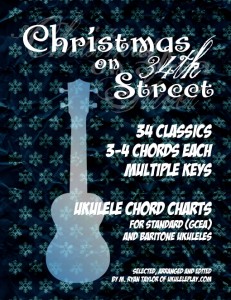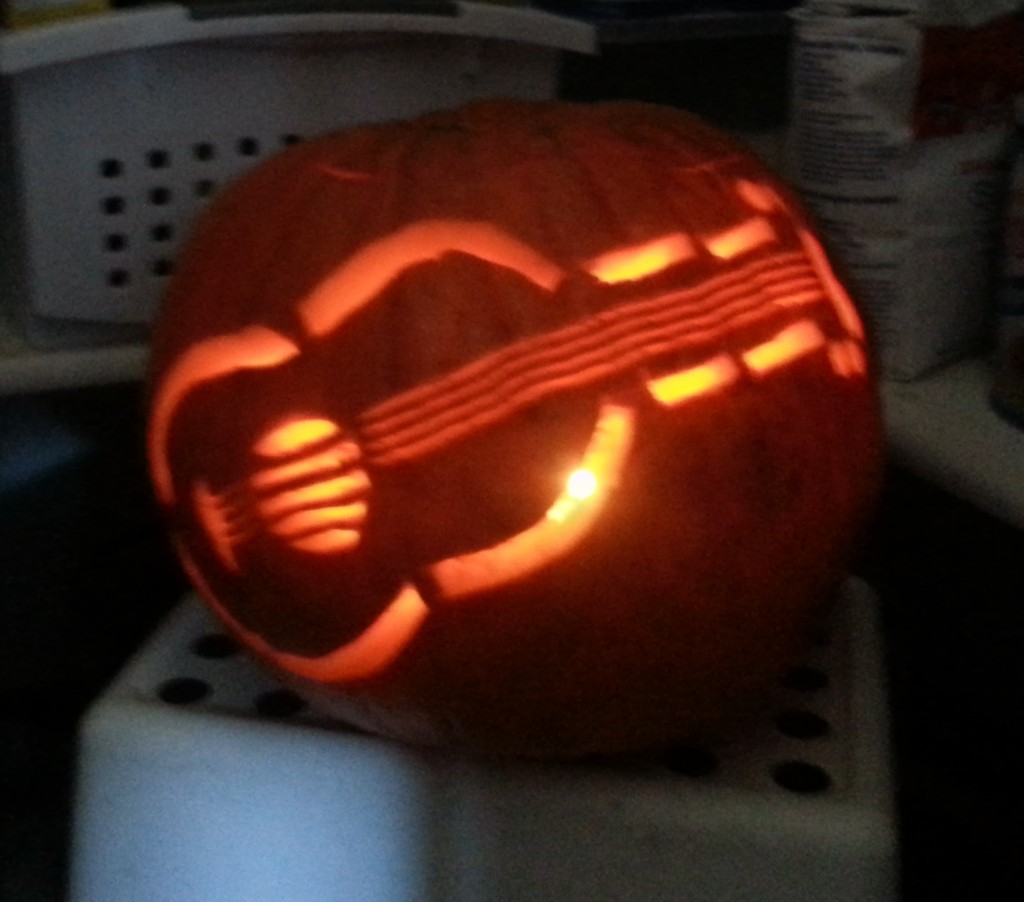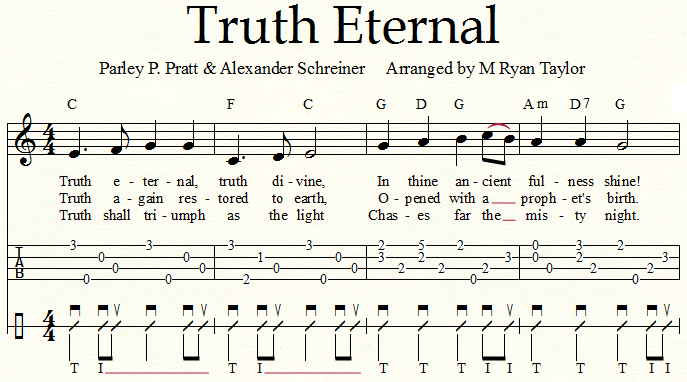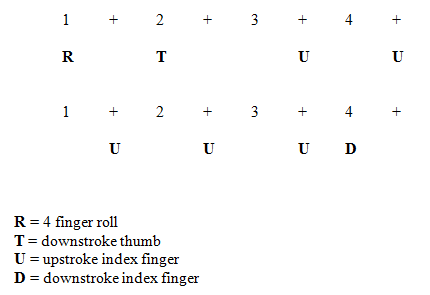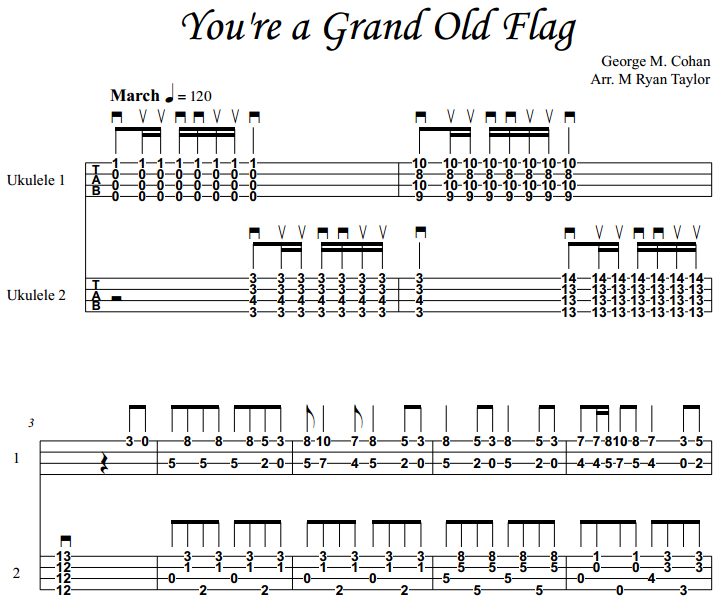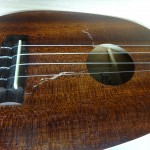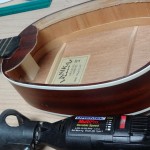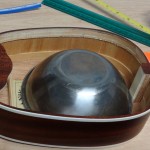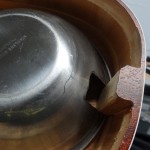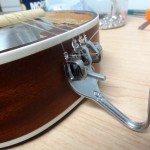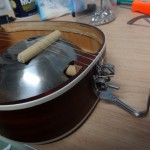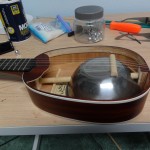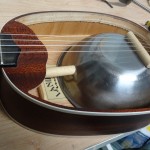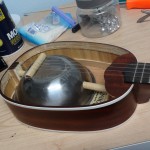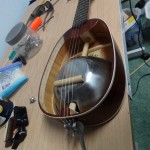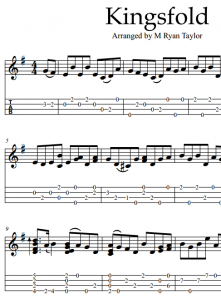Category Archives: All UkulelePlay! Blog Posts
New ‘Ukulele Practice’ Pinterest Board
I’ve created a new pinterest board to collect practical ukulele tips, techniques, tabs and songs, http://www.pinterest.com/mryantaylor/ukulele-practice/, as a sister board to the general interest board, http://www.pinterest.com/mryantaylor/-ukulele-play-/ that has photos, performances and ukulele humor.
I found I had to do quite a bit of scrolling to find the any of the tutorials I’d pinned amidst all the levity, hence the split. Hope you enjoy both boards.
Glonk vs. Monk (Folk vs. Classical)
 I really have enjoyed reading Ralph Shaw’s blog, The Ukulele Entertainer. He has lots of great insights. This last week he posted a story from ukulele education pioneer Chalmers Doane (whose work I am familiar with and greatly respect). The story really bothered me for some reason. You can read the whole article here, but in essence . . .
I really have enjoyed reading Ralph Shaw’s blog, The Ukulele Entertainer. He has lots of great insights. This last week he posted a story from ukulele education pioneer Chalmers Doane (whose work I am familiar with and greatly respect). The story really bothered me for some reason. You can read the whole article here, but in essence . . .
Caveman Glonk has trouble communicating to the other members of the tribe his special log drumming skills, so he creates a kind of musical notation to communicate the info to his unmusical friends.
Whoa! Hold the presses! Music notation came about to teach music to the unmusical? Not so. Here is my reply:
“I’ve been a long time subscriber and know and admire the work of Chalmers Doane, but somehow this post really bothered me. Now that I’ve had a chance to mull over this over and calm down a bit, I still have some problems with the analogy.
First of all, this is not how our system of musical notation was invented or developed. We actually know quite a bit about the development of early Western notation. The oldest surviving example of a complete composition comes from the Greeks; the Greeks were hardly Glonk, they were an advanced society. The composition is an epitaph, and I think that is symbolically fitting as a kind of ‘forget me not.’ See http://en.wikipedia.org/wiki/Seikilos_epitaph
I’ve heard a recording of a recreation of the Seikilos epitaph and it is a lovely little melody. I’m so glad and grateful someone had the foresight to write it down and preserve it for us. It has touched my heart and at one time I even wrote a set of variations on it for a mini Greek mythological drama.
There is no evidence to support the idea that music notation developed to aid the unmusical (which I personally find a repugnant thought – every human being has the potential to be musical if music is treated as an integral part of their development). There is a lot of evidence to suggest that notation was developed to aid our memory and transmit information over time and space. We are awfully forgetful creatures and the act of writing, both linguistic and musical, screams out, “I don’t want to forget this!”
In an age of easy recording, it is easy to lose sight of how important musical notation has been to the development of our musical culture. Each generation has had to opportunity to build on the wealth of musical experimentation of the past, because it has been written down.
It is also important to remember that modern Western notation began with monks, not the folk musicians and troubadours (though they quickly caught on to its power and adapted it for their own purposes). Monks were entrusted with our collective memory in those days and writing was the way to ensure things were not forgotten. On top of that, there was the task of keeping track of a complicated liturgical calendar and the many thousands chants that were created to serve it. That was the origin of our musical notation system.
I highly value the ‘folk’ tradition, the transmission of ideas, music, and stories through word of mouth. That doesn’t mean I have to devalue the ‘classical’ tradition and the benefits and insights it has brought into my life. I’ve lived in both worlds, and I’m frustrated that we seem to have to have this kind of musical snobbery on both sides of the fence. “You guys aren’t real muscians.” “No, its you guys that aren’t real musicians.” Blegh!
Also, the idea that somehow “the people who couldn’t play music got control of a system for teaching it,” is so insulting. This runs hand in hand with the idea that “those who can’t, teach.” Which is so patently ridiculous as to defy reason. You could fill vaults with stories of great musicians that were also great teachers (I recognize you didn’t mean to imply this, you after all are a teacher – I have all your DVDs).
One may as well say, “there are composers and then there are parrots.” If a musician isn’t writing and performing their own material, aren’t they just a parrot? I don’t believe that at all, but this is the kind of divisive logic that the fictional Glonk narrative is based on.
Also, most of the teachers I’ve had in my life (almost all classically trained) have always tried to get me beyond the notes on the page and to be expressive. None of them ever said, “Stop with what’s here on the page, don’t add any musicality to it.” I find it interesting that some (not all) of the best performers in the ukulele world have had some background with classical music: Sarah Maisel (former violinist), Craig Chee (former/current cellist), Daniel Ho (classical guitar) . . .
That said, I’ve loved your work and your blog and am a fan.”
New Book Reviewed on Got a Ukulele
Read Barry Maz’s review of my new ukulele songbook Christmas on 34th Street:
Barry is the author of a number of great ukulele books for beginners that are available on Amazon.
Christmas on 34th Street : 34 3-4 Chord Classics for Ukulele and Baritone Ukulele
- Christmas on 34th Street eBook on Sellfy
- Christmas on 34th Street Printed Edition on Amazon.
- Free sample below (see contents)
34 Christmas Classics arranged for Ukulele (GCEA) and Baritone Ukulele by M. Ryan Taylor of UkulelePlay.com, each with only 3-4 chords each and presented in multiple keys to allow you to choose which is best for your vocal range and playing ability (also allows for easy modulating between verses).
Selected and arranged with ukulele clubs, jamming groups and classrooms in mind, where players may range from beginners to advanced players. Most of the songs have been placed in keys that allow a standard ukulele strung with traditional / re-entrant / high-g GCEA tuning to pluck the melody, allowing groups to create simple duets between pickers and strummers on the fly.
Songs include:
Away in a Manger
Boars Head Carol
Bring a Torch, Jeannette Isabella
Christmas is Coming!
Coventry Carol
Deck the Hall
Ding Dong! Merrily on High!
First Noel, The
Friendly Beasts
Go Tell it On the Mountain
Good Christian Men Rejoice
Good King Wenceslaus
Here We Come A-Wassailing
Holly and the Ivy, The
In the Bleak the Midwinter
Infant Holy, Infant Lowly
Jingle Bells – free sample!
Jolly Old St. Nicholas
Joy to the World
March of the Three Kings, The
Masters in this Hall
O Come, Little Children
Once in Royal Davids City
Rocking Carol
Shepherd! Shake Off Your Drowsy Sleep
Silent Night
Sing We Now of Christmas
Sussex Carol
Twelve Days of Christmas, The
Up on the Housetop
Wassail, Wassail, All Over the Town!
We Wish You a Merry Christmas
Wexford Carol, The
What Child is This?
Want more simple, but awesome Christmas songs to add to your repertoire? Check out The Two Chord Christmas Songbook.
The Uke-olantern (Post-Halloween Ukulele Fun)
This jackolantern was carved by one of my students, The Vocal Sokol (links to her blog):
Farewell Halloween, until we meet again next year!
The Ghost of the Ukulele
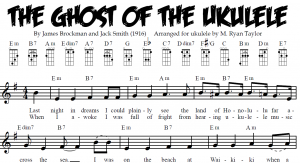 A silly little offering for Halloween, this song came out in 1916, riding on the ukulele’s first wave of popularity:
A silly little offering for Halloween, this song came out in 1916, riding on the ukulele’s first wave of popularity:
“Last night in dreams I could plainly see the land of Honolulu far across the sea, I was on the beach at Waikiki, when a million ukuleles started chasing me . . .”
Original recording: http://www.loc.gov/jukebox/recordings/detail/id/5447/
I’d hoped to do a video, but just didn’t have enough time. I hope you enjoy the music anyway! Send me videos if you make them! Happy Halloween!
More Halloween fun:
- Thirteen for Halloween : Ukulele Edition. 13 fun songs by M Ryan Taylor celebrating all things that go bump in the night. The original album and a video playlist on YouTube.
Truth Eternal
- Truth Eternal (PDF download) by Parley P. Pratt and Alexander Schreiner, arranged by M. Ryan Taylor.
This simple arrangement provides a fingerpicking and strum pattern that can be used on alternating verses or combined with two to three ukuleles (with the melody picked).
First Ukes
Four ukulele bloggers chime in on their first ukulele and tips for beginners looking for a first instrument. You can find the article at http://circuitsandstrings.wordpress.com/2013/10/13/my-first-ukulele-four-bloggers-share-their-experience/
Ukulele Tuning Tip for New Strings
Tuning an ukulele for the first time, you might wonder, “What is wrong with this instrument? It just won’t stay in tune.” Some conclude that, “The tuners must be slipping,” but if you have geared tuners, this is usually not the case. It is natural for new strings stretch out for the first few weeks of use until they ‘settle in’ and stay in tune for more than a few minutes.
However, if you’d like to break your new strings in a little faster, I suggest that the first time you tune them that you tune them to Canadian tuning: ADF#B (reference notes on ukehunt), a whole step higher than standard GCEA. What then? Walk away from your ukulele for a few hours (or a day) . . .
When you come back to your uke, it will be much easier to tune to GCEA and stay there for a longer period of time. Tuning the first time to Canadian tuning will not likely hurt your uke either, as thousands of Canadians tune it that way every day.
When you tune GCEA, the easiest way is with an electronic tuner, but here is a video reference to tune to if you need it:
Funiculi Funicula
http://youtu.be/i9CFFpA6CMQ
- Funiculi Funicula – Neapolitan (original) pdf with uke chords
- Funiculi Funicula (Italian) pdf with uke chords
One of the all-time most popular Neapolitan songs (an Italian dialect), performed by countless tenors across the globe, including the big three. A fabulous song, all about the funicular railway on mount Vesuvius and love, of course.
My contribution to a uke article
. . . on recording setups. Read it here: http://uke4u.com/the-ukulele-recording-setup-of-5-ukulele-bloggers/
The Spirit of God – New Ukulele Tablature
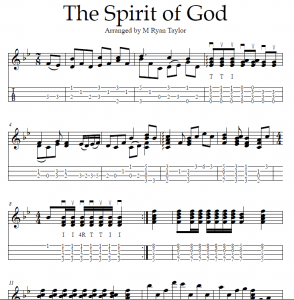 A new arrangement of one of my favorite hymns:
A new arrangement of one of my favorite hymns:
You can see and hear the original hymn at https://www.lds.org/music/library/hymns/the-spirit-of-god?lang=eng. The hymn has a long history, and was sung at the first LDS temple dedication in 1836. It is still sung today around the world in LDS congregations and at temple dedications.
Lyrics of the first verse and chorus:
The Spirit of God like a fire is burning!
The latter-day glory begins to come forth;
The visions and blessings of old are returning,
And angels are coming to visit the earth.
We’ll sing and we’ll shout with the armies of heaven,
Hosanna, hosanna to God and the Lamb!
Let glory to them in the highest be given,
Henceforth and forever, Amen and amen!
You can learn more at http://en.wikipedia.org/wiki/The_Spirit_of_God_Like_a_Fire_Is_Burning.
Beyond D DU UDU : Favorite ‘Go-To’ Strums from 5 Ukulele Bloggers
Everyone seems to know the unofficial international ukulele strum, D DU UDU, but there is so much more you can do with the right hand. 5 ukulele bloggers weigh-in on their favorite ‘go to’ strums . . .
Modified Clawhammer Strum
One of my favorite strums goes like this:
- Thumb plucks “c” string.
- Down strum all four strings.
- Index finger pluck “a” string.
- Thumb plucks “g” string.
- Down strum all four strings.
http://youtu.be/QFx8jdowMI8
A variation of this pattern (and a song tutorial) can be found here:
http://circuitsandstrings.wordpress.com/2013/01/18/lafayette-lilt-tutorial/
~Daniel Hulbert of circuitsandstrings.wordpress.com
Daniel will be teaching at this years Utah Uke Fest.
SKA Patterns
This video will (hopefully) supply you the foundation you need to start jamming with some ska tunes.
Before I had a family and a real job, I spent my days touring with a couple different ska bands. For some reason this genre of music, with it’s happy upbeats and carefree attitude has always appealed to me and the style transfers quite well to the ukulele. I guess that it makes sense…the ukulele originates from a sunny island (Hawaii) and ska music comes from a similar, albeit different island (Jamaica).
This style of music is all about timing – your strumming hand and fretting hand really have to be in sync and know what each other is doing. Like riding a bicycle, it might be frustrating and seem impossible at first, but with enough patience it will eventually click.
~Miles Ramsay of UKEonomics.com
The ‘Easy’ Split Stroke
This video demonstrates a simplified version of the split stroke with the song, The Old Ark’s a Moverin’ that I teach in my Level 2 ukulele classes:
This ‘easier’ version of Split Stroke splits 2 ‘triplet strums’ and a down-up evenly across 4 beats to create a syncopated, driving foundation for singing. Here’s two ways to look at it:
- Dt uD tu Du
- Dtu Dtu Du
D = accented down strum with the index finger
t = strumming down with the fleshy part of the thumb
u = up strum with the fleshy part of the index finger
If you’re just getting started with split/syncopated rhythms, take it slowly at first and work your speed up little by little.
~M. Ryan Taylor of UkulelePlay.com
Bossa Nova Strumming
Chords:
Tuning: G C E A ( high G ), Beat: 4/4, Tempo: 118 bpm
Strumming Pattern:
This is one way to play Bossa Nova style on your ukulele:
- First learn the strumming pattern ( 2 bars long ).
- In the beginning mute the strings with the left hand as shown in the the video.
- Mind the change from downbeat ( downstroke ) to offbeat ( upstroke ). This is called Partido Alto and brings some Latin touch in the strumming.
- Start with one chord and then add the others.
- Mute the strings between the strokes with your left hand.
~FriendlyFred of uke4u.com
Vaudeville and Variety-Style Strumming
I tend to play jazz and pop from the first four decades of the 20th Century, music that calls for strums that provide the ability to create syncopated rhythmic combinations, including triplets, 16th notes and 32nd notes.
The four strums I use most often are known as the “fan stroke”, the “triple”, the “double-time”, and the “split stroke” – as George Formby called it – or “syncopated stroke” – as Roy Smeck referred to it. All four are used liberally in this video of the 1931 tune “Lady of Spain”, which has forever been associated with the accordion.
I play the verse and refrain through twice using a combination of fingerpicking and various strokes and rolls, including flamenco-style finger rolls in refrain at 0:15, 1:15 and 1:24.
Then, at 1:32, I pick up the pace and run through the refrain using two strokes primarily: the triple and the double-time.
Let’s start with the simplest: the double-time. This is just a “down-up” every beat. It’s useful for creating a double-time feel if you increase speed and play it “down-up – down-up” every beat.
Now, the triple. This is often mistakenly referred to as a “triplet” stroke. It is and it isn’t. The triple stroke is actually a quarter-note triplet followed by an additional quarter note downstroke – “da-da-da – daa”. This is achieved by doing a downstroke across all four strings with the index, followed by a downstroke with the thumb, followed by an upstroke with the index and thumb together, followed by a downstroke with the index and thumb together – “down-down-up – down”.
I use the fan stroke several times in this arrangement. At 1:56 and again at 3:11, I play the classic triplet fan stroke. Its made up of three strokes – a downstroke with the nails of the pinky and ring finger, followed by a downstroke with the pad of the thumb, followed by an upstroke with the nail of the thumb. The effect is a straightforward “da-da-da”. You can see that I break my wrist when I do it, moving my hand in a circular fashion. On the downstroke with the pinky and ring fingers, the hand fans out – hence the name of the stroke. This stroke can be immediately and infinitely repeated, with the effect of an almost infinite triplet.
Finally – there’s the split stroke – I play a version of the refrain based on the split stroke starting at 2:28. It was the hardest of the above strokes to learn and – unfortunately – it’s the hardest for me to explain. The basic stroke is accomplished with the thumb and forefinger held together as for a basic downstroke strum. The stroke is “down-up-Down, down-up–Down, down-up” and the rhythm is two eighth notes followed by two syncopated triplets. The name “split” comes from the fact that on the initial downstoke, you only hit the botton two strings of the uke; then on the upstroke, you only this the op two strings of the uke. Then, on the third downstroke, you strike all four strings. This approach gives you the right accents. You hit the accents on the full four-string downstrokes of the figure, so the effect is “ba-da-DA, ba-da-DA, ba-da”. I learned how to play this stroke from watching videos made by fellow George Formby Society members Matt Richards http://www.youtube.com/watch?v=qhjy9_3rusc Peter C. Nixon and Mike Warren http://www.youtube.com/watch?v=t8cnPP3SU5s . I also highly recommend their tutorials of the additional Formby strokes – the Fan, the Triple, and the Shake, which I am still struggling with.
Those four strokes are “go-to” for me, with the Triple and Double being most commonly used to drive the tempo, but the fan and split stroke are often used in the way that a tenor banjo player might use a tremolo – as a means of holding a note or injecting interest in a solo or accompaniment.
~ John Bianchi of theukaholic.blogspot.com
Thanks to all the guest bloggers for sharing some awesome info!!!
You’re a Grand Old Flag : Ukulele Duet
A classic piece of George M. Cohan Americana arranged for two or more ukuleles:
Enjoy!
Didn’t My Lord Deliver Daniel
One of my favorite spirituals in a variety of different versions:
- Didn’t My Lord Deliver Daniel (pdf)
- Didn’t My Lord Deliver Daniel 2-part (pdf)
- Didn’t My Lord Deliver Daniel 2-part with Descant (pdf)
- Didn’t My Lord Deliver Daniel Choir Only (pdf)
“He delivered Daniel from the lion’s den . . . then why not every man?”
Enjoy!
There is a Haunted House in Town
This parody of “There is a Tavern in the Town” is another of my Halloween favorites:
Enjoy!
Three Blind Mice
- Three Blind Mice (pdf)
The classic children’s song in two versions, regular and a special 1-finger chord arrangement with some altered melodic notes.
Enjoy!
Itsy Bitsy Spider
The classic children’s song in two versions, regular and a special 1-finger chord arrangement with some altered melodic notes.
- The Itsy Bitsy Spider (pdf)
Enjoy!
Mister Rabbit
A classic children’s folk song, just in time for Easter.
- Mister Rabbit (pdf)
There are a lot of variations on this wonderful tune; one of the most charming is Burl Ive’s rendition. Enjoy!
Blood on the Saddle
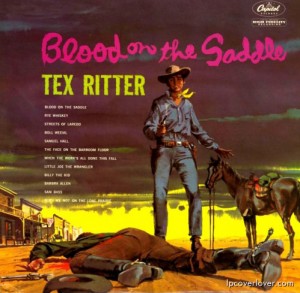 I love this parody of ‘Western’ cowboy songs (whose origin likely includes college glee clubs). It has enjoyed quite a bit of popularity with actual ‘Western’ folk artists (I recently bought a record of such, just because it had this track on it). However, the most famous recording comes from Tex Ritter.
I love this parody of ‘Western’ cowboy songs (whose origin likely includes college glee clubs). It has enjoyed quite a bit of popularity with actual ‘Western’ folk artists (I recently bought a record of such, just because it had this track on it). However, the most famous recording comes from Tex Ritter.
- Blood on the Saddle (pdf)
I like to program this song around Halloween; I’m a big fan of the humorous side of the holiday, I even have my own Halloween album and website for kids.
Two by Two : Round for 4 with Ukulele Chords
 Two by Two (pdf)
Two by Two (pdf)
An original round celebrating the Noah’s Ark story from Genesis. Provided with Ukulele, Baritone Uke & Guitar Chords.
FYI: One of the early ‘approved’ toys for children to receive at Easter time was a Noah’s Ark playset.
Another ‘Ark song,’ a spiritual, “The Old Ark’s A-Moverin’,” can be found in the 123 Ukulele Play Songbook.
Pineapple Ukulele to Resonator Rescue
- My wife swears she didn’t sit on it! But has no explanation for how her uke came to be cracked in on the surface. Rather than complain, I took the opportunity to have a DIY project this last weekend.
- Routed out the damaged wood on the top.
- Found a bowl we never use (a wedding gift) that fits the space.
- Had to remove part of the bowl so the bridge would make it onto the flat of the bowl.
- I read somewhere that forks work great for this.
- Stringing it up.
- You’ll notice I had to put a dowel through the bowl to provide support against string tension.
- Still debating whether I want to drill holes in the bowl.
- It sounds pretty good. Like a really quiet distorted guitar.
- I do wish it was a little louder, but it is once again playable. 🙂
Kingsfold : New Ukulele Tablature
- Kingsfold PDF (Ukulele Tablature Solo)
This famous tune has been used for hymn-texts such as “If You Could Hie to Kolob,” “O Sing a Song of Bethlehem” & “I Heard the Voice of Jesus Say.”
Arranged in a mostly ‘campanella’ style, a la John King.
Two Chord Christmas Songbook now on Amazon and Sheet Music Plus!
- Amazon : http://amzn.to/VBBhSi
- Sheet Music Plus : http://www.sheetmusicplus.com/title/19839731
- eBook : http://bit.ly/PYxihv
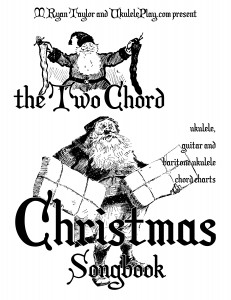 34 beautiful Christmas songs that sound great with just two chords each! Chord charts for ukulele, guitar and baritone ukulele included. These songs have been hand-picked for greatness from over a hundred possible selections (and those found amid hundreds and hundreds more). There are no ‘filler’ songs here; each stands on it’s own for solo or group singing. Many are lesser-known carols, but every one is a gem. So, whether you’re a soloist, in a small group, or the leader of a large community, you’ll find some great songs to add to your Christmas caroling repertoire.
34 beautiful Christmas songs that sound great with just two chords each! Chord charts for ukulele, guitar and baritone ukulele included. These songs have been hand-picked for greatness from over a hundred possible selections (and those found amid hundreds and hundreds more). There are no ‘filler’ songs here; each stands on it’s own for solo or group singing. Many are lesser-known carols, but every one is a gem. So, whether you’re a soloist, in a small group, or the leader of a large community, you’ll find some great songs to add to your Christmas caroling repertoire.
Contents:
- Apple Tree Wassail
- As Joseph Was A-Walking
- Behold that Star
- Carol of the Bagpipers, The
- Cherry Tree Carol, The
- Child of God
- Christ Child’s Lullaby, The
- Christ Was Born on Christmas Day
- Christmas Eve is Here
- Cold is the Morning
- Come Running You Shepherds
- God Bless All
- He is Born (Il Est Ne)
- Hear Them Bells
- Hey, Ho, Nobody Home
- Huron Indian Carol
- I Saw Three Ships
- I Saw Three Ships (alternate)
- Mary Had a Baby
- O Christmas Tree
- O Leave Your Sheep
- O Little Town of Bethlehem (Forest Green)
- Pat-a-Pan
- Quickly Now, O Shepherds
- Rise Up Shepherd and Follow
- Sleep of the Infant Jesus, The
- Star in the East
- Still, Still, Still
- Tomorrow Shall Be My Dancing Day
- Truth from Above, The
- Wassail! Wassail all Over the Town!
- Welsh Carol
- What Shall We Give?
- Wondrous Love
Where is He? – Matthew 2:2 (Round for 3)
Though this round could be sung by anyone, I wrote it with 3 men in mind, representing the wise men from the east. Chords for ukulele, guitar and baritone ukulele are provided for an optional accompaniment.
Merry Christmas!
Text from Matthew 2:2
Where is he that is born King of the Jews? for we have seen his star in the east, and are come to worship him.

